Veil ancistrus: description, care and breeding
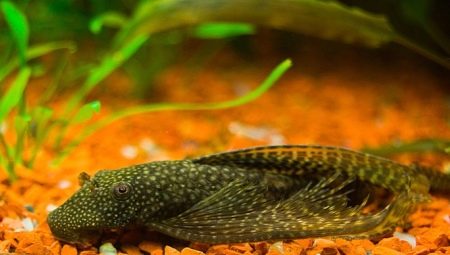
Many aquarists prefer to breed not only miniature fish, but also decorative catfish in an artificial reservoir. These include veiled ancistrus (dragonfly). The inhabitants of the depths are unpretentious in care and are distinguished by a peaceful disposition. Leopard and red catfish get along well with almost all types of aquarium fish.
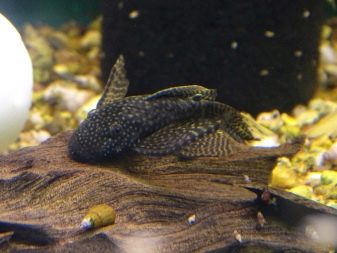
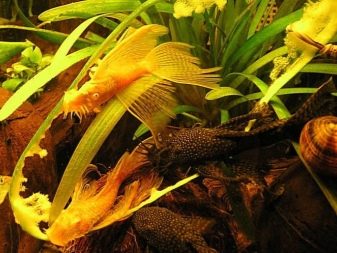
Characteristic
A beautiful variety of decorative catfish called ancistrus veil in natural conditions prefers the rivers of South America with a strong current. An unusual variety of aquarium catfish came to Russia only in the mid-70s of the last century. This fish is known for its unpretentiousness and is suitable even for novice aquarists.
Veil fins are a characteristic feature of the variety. The body of the catfish has a drop-shaped flattened shape, and bony plates are visible on the back and lateral parts. The fish is characterized by a wide head, and the mouth resembles a sucker. Due to the individual characteristics of the structure of the body, the veil ancistrus during the current are kept on snags and underwater cobblestones. Powerful horn-shaped jaws allow the fish to remove algae from the aquarium.
The colors of the veil ancistrus are quite spectacular. In leopard catfish, the body of a rich olive shade is decorated with numerous light spots. The fish got the name "dragonfly" because of the elongated fins, which visually resemble a veil. A fish moving in an artificial reservoir looks like a well-known graceful insect with transparent wings. These inhabitants of the depths look bright and original.This explains their immense popularity among avid aquarists. There are also yellow, white and red ancistrus.
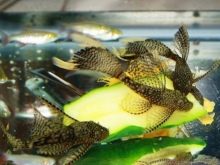


Distinguishing the male from the female is not difficult. The former are much slimmer than females. Also, "boys" have leathery growths on their heads. In an artificial reservoir, fish reach a length of 8-10 cm.
Sucker catfish spend most of their time at the bottom of the aquarium, since they do not have a swim bladder. Veil ancistrus prefer to study the bottom and cling to various objects with their mouths. Oneither act as "Orderlies"cleaning the walls of the aquarium from algae.
Experts say that the dragonfly ancistrus is able to change sex. The reasons lie in unfavorable external factors, under the influence of which the female turns into a full-fledged male and performs his “male” functions.
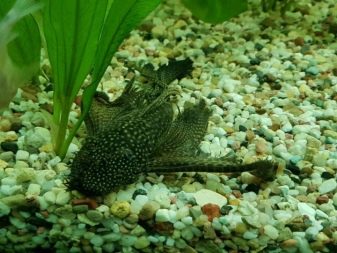
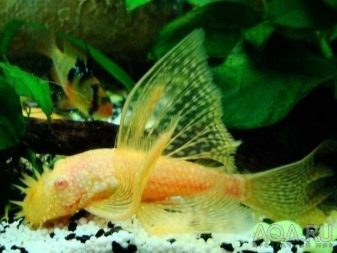
Maintenance and care
Veil ancistrus are pretty easy to maintain. They do not experience discomfort in small aquariums and do not require bright lighting. So, the rules for keeping the "dragonfly" are as follows:
- any aquarium from 50 liters;
- water temperature - from 20 to 25 degrees;
- hardness - from 10 to 25;
- acidity - up to 7.5;
- powerful aeration and filtration of liquid in the aquarium;
- weekly change of 1/3 fresh water;
- moderate lighting (dim light is perfect).
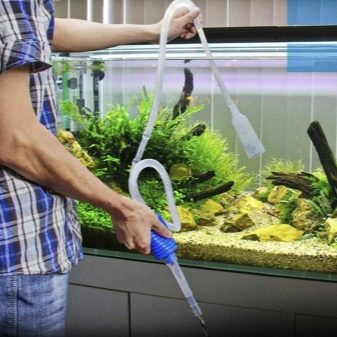
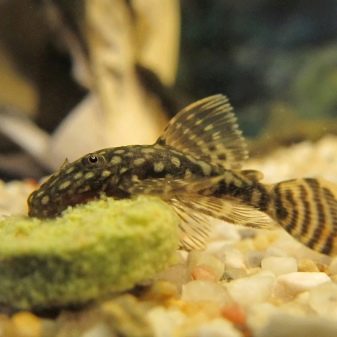
It is also advisable to create green areas in an artificial reservoir, since this type of fish likes to hide in the thickets. Another important point: Ancistrus spend most of the time at the bottom, so the presence of snags and small stones on it is a must.
Dragonfly catfish eats food of plant origin. The fish are given fresh vegetables (cucumbers, zucchini and lettuce, previously scalded with boiling water), as well as dry food in the form of flakes and tablets. They feed the inhabitants of the depths with bloodworms.
With an insufficient amount of food, the sucker catfish begin to absorb the leaves of the aquarium plants.
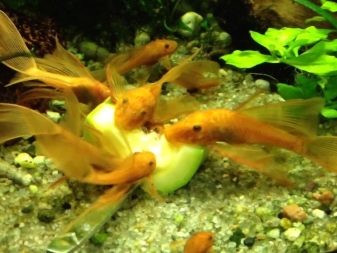
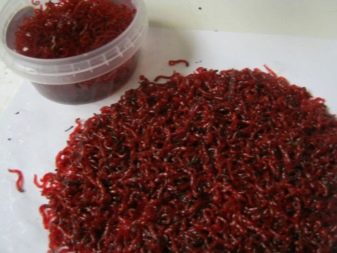
Compatibility and breeding
Veiled ancistrus are distinguished by a friendly disposition and do not show aggression towards their neighbors in the aquarium. With them, you can safely contain almost all varieties of aquarium fish. However, ancistrus can come into conflict with large territorial cichlids. Besides, they can damage small members of the goldfish family.
Breeding dragonflies is pretty easy. Ornamental catfish reach sexual maturity by 10–12 months and willingly "go" to spawn in the general aquarium. However, a couple that are preparing for breeding is best done in a separate container.
At the bottom of a temporary aquarium they spread small ceramic tubes and driftwood. Spawning is stimulated an increase in the temperature of the water, as well as its replacement. In most cases, the female "goes" to spawn a day later. At a time, she spits from 60 to 80 eggs of bright red color. After spawning, the female is sent to a common “dwelling”, and the “daddy” protects the “offspring” until the fry appear. The first days after birth, juveniles feed on supplies from the yolk sac, and then they begin to feed with crushed tubule. In an artificial reservoir, veiled ancistrus can live up to 7 years.
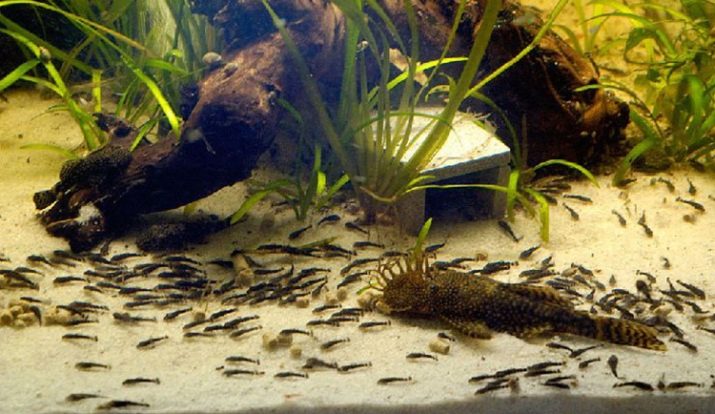
For how the veil ancistrus looks like, see the next video.








